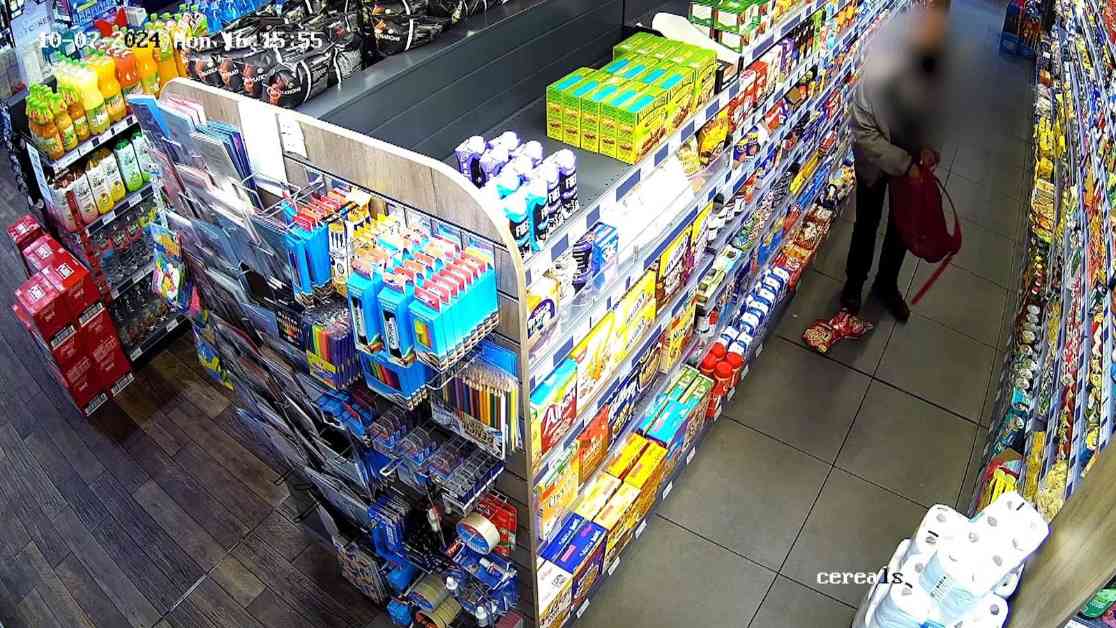I find myself in the security office of a bustling city center store, observing as a young schoolboy nonchalantly pockets a sandwich, concealing it in his jacket. Beside me stands Anton Mavroianu, a shop employee strategically positioned by the main entrance, anticipating the boy’s exit. As the boy leaves, Anton requests the item’s return. Instead of being startled by the apprehension, the boy chuckles and walks away, leaving Anton feeling powerless. This routine occurrence signifies the everyday struggle faced by shop workers in combating shoplifting.
The recent incident involving a shoplifter brandishing a knife in retaliation against Anton’s intervention exemplifies the very real danger that shop workers confront as they combat the surge in shoplifting incidents. Recorded shoplifting offenses in England and Wales have reached a two-decade high, posing a significant threat to the retail sector. The British Retail Consortium (BRC) highlights the substantial financial losses incurred by retailers each year as a result of theft, exacerbating the challenges faced by an industry striving to recover from the pandemic’s aftermath and economic volatility.
For smaller businesses with limited resources compared to larger chains, persistent theft presents a looming threat to their sustainability. Ricky Dougall, a convenience store chain owner, attests to the detrimental impact of shoplifting on his business, estimating losses of around £100,000 in the previous year. Despite reporting incidents to the police, the lack of response exacerbates the problem. The relaxation of sentencing guidelines for low-level shoplifting offenses in 2016 has been identified as a contributing factor to the escalating number of cases.
An exclusive survey conducted by Sky News and the Association of Convenience Stores reveals that 80% of shopkeepers reported incidents of retail crime in the past week, with 94% citing an increase in shoplifting over the past year. Despite the pervasive nature of the issue, 83% of shopkeepers lack confidence in law enforcement’s ability to take action against perpetrators of retail crime. Paul Cheema from the Association of Convenience Stores emphasizes the need for government support, stressing the financial repercussions faced by retailers.
In response to the escalating threat of shoplifting, retailers have invested significantly in security measures, ranging from advanced surveillance systems to increased security personnel. However, these investments come at a cost, often translating to higher prices for consumers. Matt Roberts, head of retail at a local store, expresses concerns for his staff who grapple with the daunting task of confronting shoplifters daily. The pervasive sense of unease and vulnerability underscores the pressing need for assistance in addressing the crisis.
Recognizing the gravity of the situation, the government has initiated discussions led by the Home Secretary with retail associations and law enforcement agencies to devise a comprehensive strategy. The proposed Crime and Policing Bill aims to implement stronger measures to combat low-level shoplifting and introduce a distinct offense for assaulting shop workers. The urgency of the matter underscores the necessity for collaborative efforts between authorities, retailers, and law enforcement agencies to safeguard the interests of businesses and their employees in the face of escalating shoplifting incidents.













